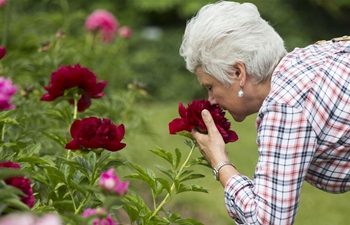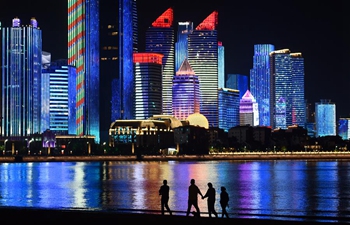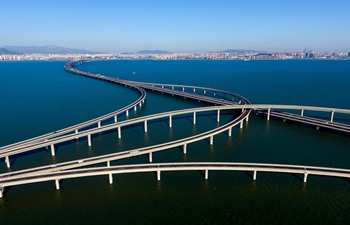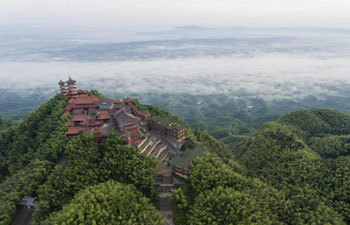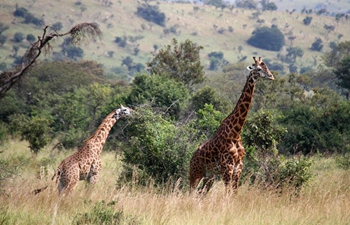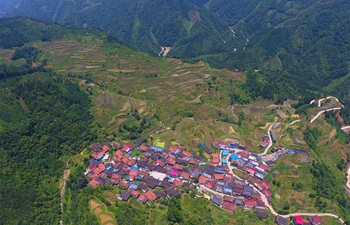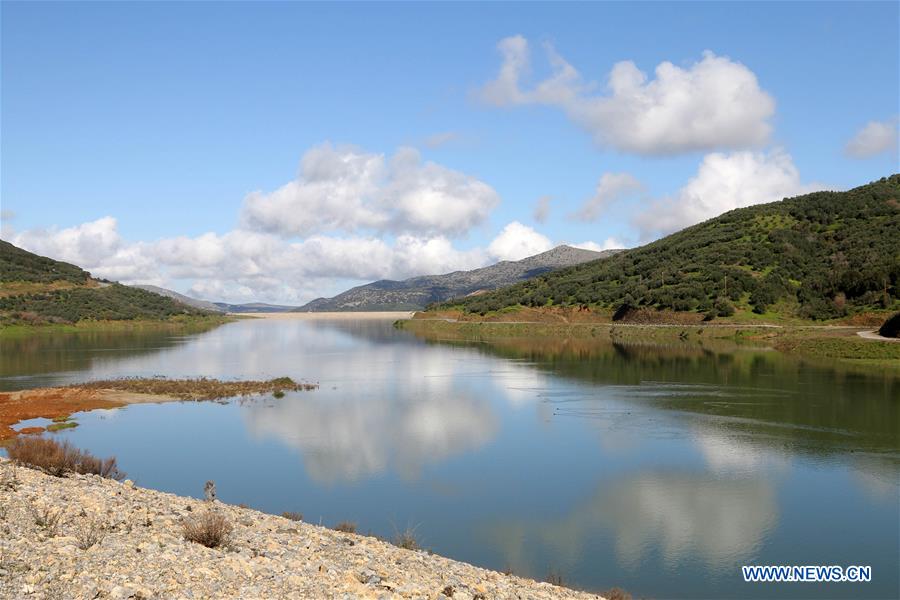
The file photo taken on March 8, 2015 shows Aposelemis dam reservoir, Heraklion, Crete, Greece. A sunken ghost village at an artificial lake on Crete Island re-emerged in recent months as a symbol of the drought nightmare Greece could face in the coming years.(Xinhua/Stefanos Rapanis)
By Maria Spiliopoulou
ATHENS, June 10 (Xinhua) -- A sunken ghost village at an artificial lake on Crete Island re-emerged in recent months as a symbol of the drought nightmare Greece could face in the coming years.
The about 80 residents of medieval village Sfendyli abandoned their houses a decade ago when the ambitious dam project of Aposelemi started.
By 2015, the village was entirely submerged in the water reservoir which was constructed to solve the chronic water shortages of the nearby port of Herakleion and other municipalities along the northern coasts of the popular tourism destination.
This year, as Crete had the driest winter in three decades, according to local scientists, Sfendyli has risen to surface again.
Rainfall on the island this year decreased by some 75 percent compared to last winter, Greek newspaper "Kathimerini" (Daily) had reported.
Crete Island was the most affected as a drop in rainfall by average 20-30 percent was recorded also at other Aegean Sea islands and the central and southern mainland, according to Kostas Lagouvardos, top researcher at the Institute of Environment and Sustainable Development Research center of the Athens Observatory.
Since September 2017, only 3.8 billion cubic meters of rainwater have fallen on Crete, while the average for the past four decades was 7.6 billion cubic meters per year, Marinos Kritsotakis, head of the Water Department of the local administration of Crete told Greek national news agency AMNA.
This year's numbers are equivalent to the 1989-1990 drought periods.
As the tourist season has started and the Greek tourism industry is heading towards new record arrivals of some 32 million visitors this year, according to the Greek government's estimates, authorities are considering measures to face the challenge.
Officials like Kritsotakis appear confident that with proper management there will be no particular problems.
Islands with desalination plants are in better position than areas depending on groundwater where authorities step up efforts for water storage works and reduction of water waste.
In 2017, according to an Interior Ministry announcement, at least 94 municipalities nationwide received a total of 15 million euros (17.7 million U.S. dollars) in subsidies for measures to deal with drought. Funds are gradually distributed also this year.
Greece should be prepared to face worse droughts in the future due to climate, scientists have warned.
Greece is one of the top 30 countries worldwide facing an over-80-percent chance to be affected by severe water shortages by 2040 due to climate change and inadequate water resources management, according to the Washington-based World Resources Institute.
Five Greek cities -- Athens, Piraeus, Herakleion, as well as Patras and Kalamata in southern Greece -- are in the highest five percent of European cities at risk of both extreme droughts and heat waves by 2050, according to a recent study of the Newcastle University.
Since climate change is a common challenge for mankind, Greek officials explore common tactics, such as the water reuse for agricultural irrigation EU Commission is promoting among other measures.
"A third of the EU's land suffers from water stress all year round and water scarcity remains an important concern for many EU member states," according to a recent EU Commission press statement.
"The Commission is proposing new rules to stimulate and facilitate water reuse in the EU for agricultural irrigation. The new rules will help farmers make the best use of non-potable wastewater, alleviating water scarcity whilst protecting the environment and consumers," it explained.




